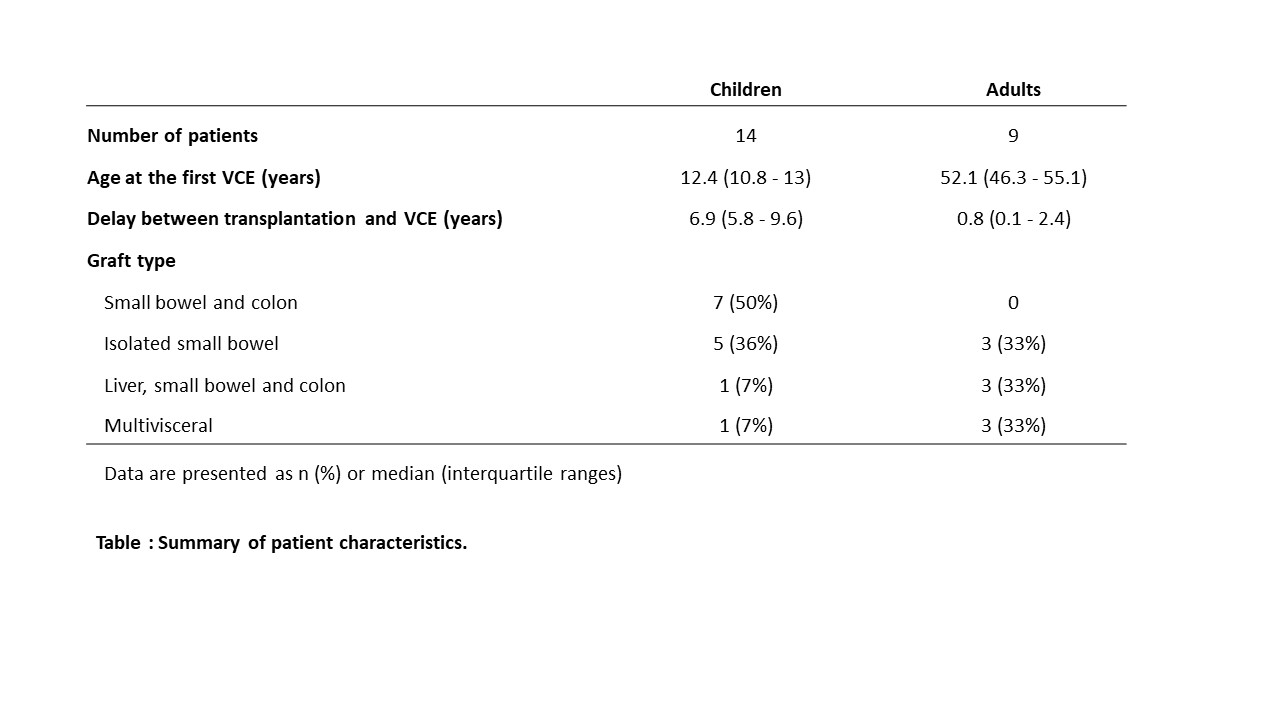Introduction: The graft follow-up through conventional endoscopy has technical limitations. The visualization of the entire small bowel by Video Capsule Endoscopy (VCE) may give important information. We collected the experience with VCE after intestinal transplantation, to define its indications and limits.
Methods: Patients with VCE evaluation between January 2014 and December 2018, from one adult and 2 pediatric centers, were included. Clinical and biological data were retrospectively collected.
Results: Thirty-three VCE were performed in 23 patients, including 14 children (22 VCE). Clinical characteristics are summarized in Table. The indications of VCE were control of rejection treatment (24%), protocol control (24%), suspicion of acute rejection (15%) or intestinal inflammation (9%). Adults ingested VCE, whereas in children, endoscopy was required in VCE (68%). The entire small bowel was explored in 23 VCE (70%). Inflammation of the mucosa was seen in 17 VCE (52%), other abnormalities (varices or bleeding) in 3 VCE (9%). VCE was considered in 9 VCE (27%), while VCE was non-contributory in 4 VCE (12%). VCE retention occurred in 3 cases (9%). Interestingly, 5 VCE (15%) demonstrated intestinal inflammation while endoscopy was normal in 3 VCE (9%) or non-contributory in 2 VCE (6%). VCE was useful for diagnosis in 24 cases (73%) and led to a change in management in 6 cases (18%).

Conclusion: VCE is a significant improvement for graft exploration after intestinal transplantation.
.jpg )